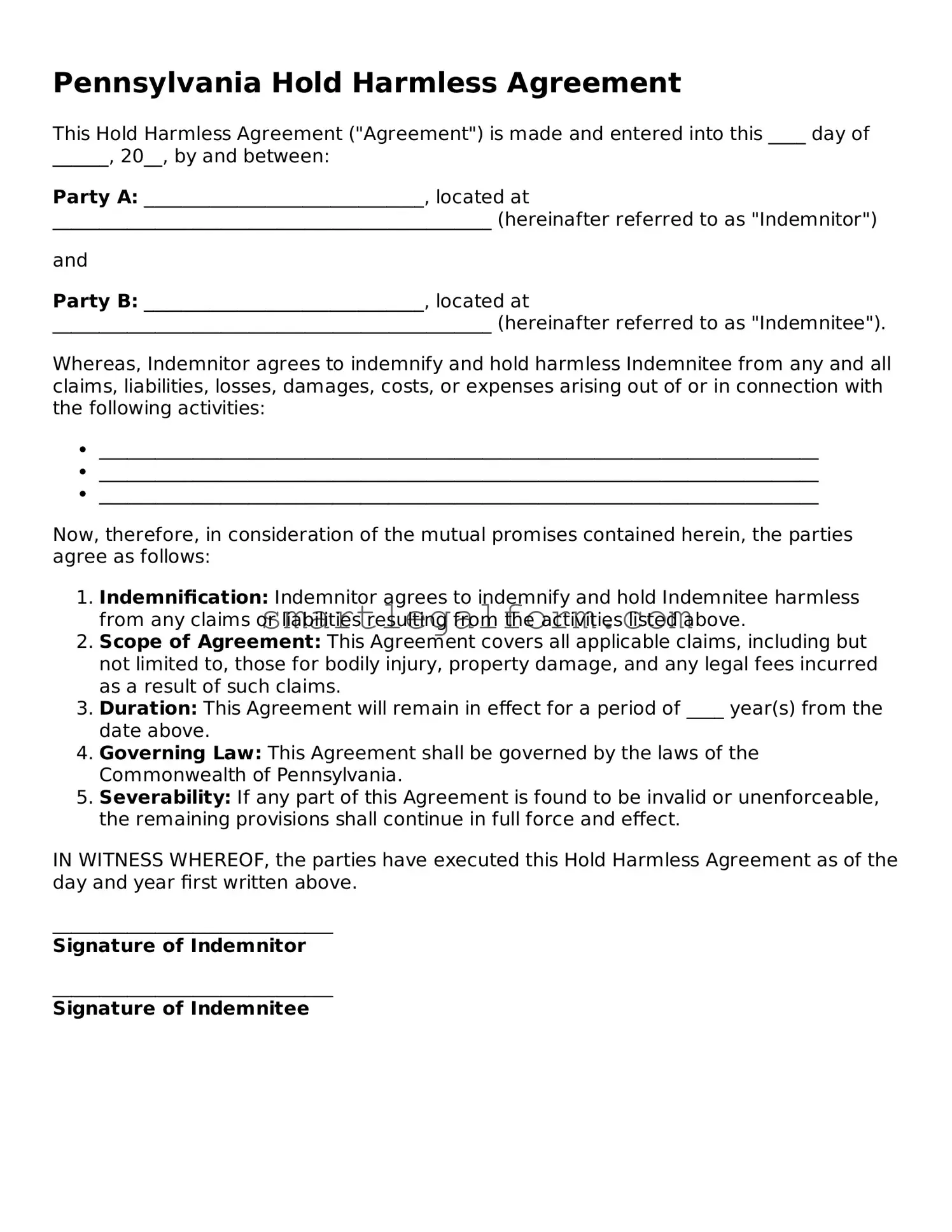Pennsylvania Hold Harmless Agreement
This Hold Harmless Agreement ("Agreement") is made and entered into this ____ day of ______, 20__, by and between:
Party A: ______________________________, located at _______________________________________________ (hereinafter referred to as "Indemnitor")
and
Party B: ______________________________, located at _______________________________________________ (hereinafter referred to as "Indemnitee").
Whereas, Indemnitor agrees to indemnify and hold harmless Indemnitee from any and all claims, liabilities, losses, damages, costs, or expenses arising out of or in connection with the following activities:
- _____________________________________________________________________________
- _____________________________________________________________________________
- _____________________________________________________________________________
Now, therefore, in consideration of the mutual promises contained herein, the parties agree as follows:
- Indemnification: Indemnitor agrees to indemnify and hold Indemnitee harmless from any claims or liabilities resulting from the activities listed above.
- Scope of Agreement: This Agreement covers all applicable claims, including but not limited to, those for bodily injury, property damage, and any legal fees incurred as a result of such claims.
- Duration: This Agreement will remain in effect for a period of ____ year(s) from the date above.
- Governing Law: This Agreement shall be governed by the laws of the Commonwealth of Pennsylvania.
- Severability: If any part of this Agreement is found to be invalid or unenforceable, the remaining provisions shall continue in full force and effect.
IN WITNESS WHEREOF, the parties have executed this Hold Harmless Agreement as of the day and year first written above.
______________________________
Signature of Indemnitor
______________________________
Signature of Indemnitee
